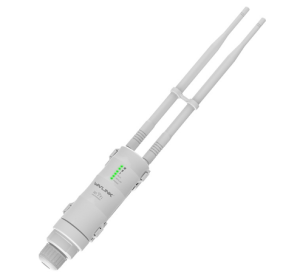In a world where the internet has become an indispensable part of daily life, the speed of your Wi-Fi router is a critical aspect that can significantly affect your online experience. A good Wi-Fi router speed is contingent upon several factors, including the number of devices connected, the type of online activities engaged in, and the layout of the area where the Wi-Fi is used.
When considering router speeds, it's essential to understand the distinction between the theoretical maximum speeds advertised by manufacturers and the real-world speeds that users experience. The advertised speeds, often noted in Mbps (megabits per second), represent the maximum capability of the router under ideal conditions. However, these speeds can be impacted by a myriad of factors such as the distance from the router, physical obstructions, and interference from other devices.
For general web browsing, email, and social media activities, a router that offers speeds between 10 to 25 Mbps can often suffice. However, for more bandwidth-intensive activities like HD video streaming, online gaming, or large file downloads, higher speeds are necessary. A good Wi-Fi router speed for such activities would typically start at 100 Mbps and above.
The efficiency of a router also depends on the frequency band it operates on. Most modern routers are dual-band, offering both 2.4 GHz and 5 GHz networks. The 2.4 GHz band provides a wider coverage area and better penetration through walls but at the cost of lower speeds and more susceptibility to interference. Conversely, the 5 GHz band provides faster speeds but has a shorter range. A balance between these two bands is ideal for ensuring both coverage and speed.

Another essential factor to consider for maintaining good Wi-Fi speeds is the router's technology standard. Wi-Fi standards have evolved, with newer standards like Wi-Fi 6 (802.11ax) offering significant improvements over previous generations. Wi-Fi 6 routers are designed to provide faster speeds, better range, and more efficient data handling, especially in crowded networks.
For larger spaces or multi-story buildings, the main router may not be able to provide complete coverage with adequate speeds. In such scenarios, an Access Point can be strategically placed to extend the coverage of the network. Unlike a Wi-Fi extender that simply repeats the signal with a potential loss in speed, an Access Point connects to the router via an Ethernet cable and broadcasts its own signal, often resulting in better performance. Understanding the role and benefits of an Access Point compared to other solutions can be critical for optimizing a network's performance. Interested individuals can explore the nuances and advantages of Access Points over other network devices through an insightful comparison guide available here.
Furthermore, a good Wi-Fi router must also provide a secure connection. Features like WPA3 encryption, guest networking, and the ability to set up a VPN are important for safeguarding your online activities. Security is not only about protecting data but also about ensuring that your connection is not compromised, which could affect speed and reliability.
Additionally, a well-performing router should be capable of handling Quality of Service (QoS). This feature allows the router to prioritize traffic based on the type of data and the device being used. For instance, you might want your router to prioritize video conferencing traffic over file downloads to ensure smooth video calls.
To ascertain whether your Wi-Fi router is delivering good speed, regular testing is recommended. This can be done using various online speed test tools. Such tests can help you determine if you're getting the speeds you're paying for from your ISP and if your router is distributing this speed effectively across your devices.
In essence, a good Wi-Fi router speed is relative to individual needs and environments. It should be able to handle your highest bandwidth requirements with ease, offering a combination of fast speeds, reliable performance, broad coverage, and robust security. With the right setup, which may include the use of an Access Point for larger areas, users can enjoy an optimal online experience tailored to their specific demands. Regular assessments and upgrades of your Wi-Fi infrastructure can ensure that your network keeps pace with the ever-increasing demands of modern internet usage.
